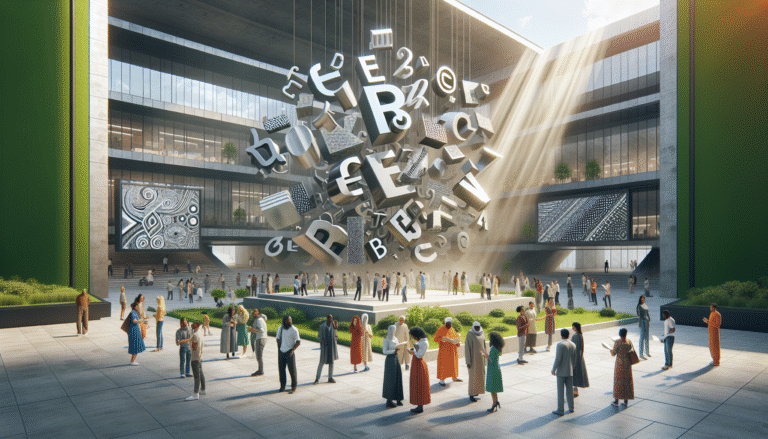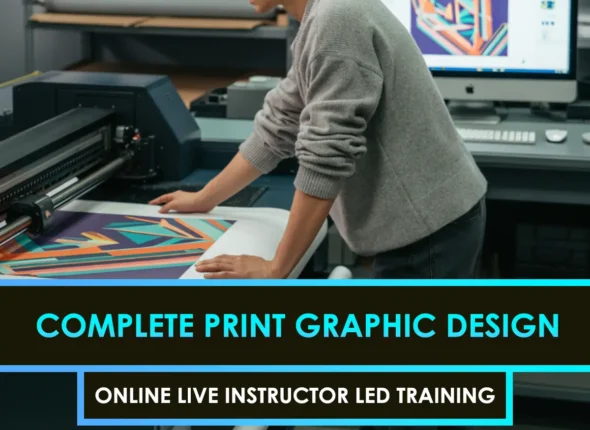The Big Deal About Fonts
Fonts aren’t just for making things readable; they tell us what’s happening in the world around us. A well-chosen type can echo what’s happening in politics or society at large.
Getting Started With Fonts
Fonts make life simple when you plan how words should look and feel on a page or screen. Picking the right font involves decisions about style, size, and spacing. It’s a balance of making text clear and visually appealing. If you’re in the early stages of figuring this stuff out, our beginner’s guide to fonts for graphic designers should be right up your alley.
Why Fonts Matter Big Time
Fonts can make or break your design, whether you’re creating a brand, a website, or a magazine; the fonts you pick tell people how to feel about your work. They can make things more readable or even create a vibe that sticks with people.
Here’s a cheat sheet on why certain font factors are essential:
| Font Factor | Why It Matters |
|---|---|
| Font Choice | Defines brand vibe |
| Text Size | Keeps eyes from straining |
| Text Line Go length | Helps or hinders readability |
| Space Between Words/Lines | Makes reading easier |
Want more tips on matching fonts to your brand or project? Check out our tips on choosing brand fonts.
Fonts as Mirrors to Our World
Fonts don’t just look pretty; they have stories to tell about the times we live in. Bold fonts seem to emerge when we’re feeling upbeat and creative, while stricter fonts appear during tense times.
Examining the fonts that were popular at a given time can give you a glimpse into the mood of an era. They grow and change according to the norms and values of the societies that use them. If you’re looking for a bit of inspiration, our future-gazing piece on what fonts might look like in 2025 is a good read.
So, fonts do double duty. They help convey the message and reflect what’s happening between the lines in society. For more practical advice on dodging common font faux pas, you’ll find our typography do’ n’ts for better design guide super handy.
Historical Context
Typography through the ages is like a backstage pass to society’s drama, showing how typefaces both react to and shape the world around them.
Evolution of Typography
A quick rewind takes us to the 15th century, when Johannes Gutenberg revolutionized printing with his movable type. This was like unleashing a literary beast that spread stories and ideas across Europe like wildfire.
| Period | Key Development |
|---|---|
| 1450s | Gutenberg’s game-changing movable type |
| 1700s | Transitional typefaces make an entrance |
| 1800s | Sans-serif fonts start their journey |
| 1900s | Modernist typography kicks off |
| 2000s | Digital typography enters the scene |
Jumping to the 18th century, we saw transitional typefaces, which played dress-up in bold and delicate strokes. They reflected the Enlightenment’s love affair with clarity and cool, rational design.
The 19th century gave rise to sans-serif fonts, which became stars in the world of advertising due to their striking and straightforward style. These fonts rode the industrial wave to fame, becoming symbols of modern hustle and bustle.
Next up, the 20th century! Modernist typography, led by Jan Tschichold and the Bauhaus group, discarded tradition in favor of a cleaner, more straightforward approach. Their minimalist approach mirrored the societal shake-ups of their era.
The 21st century turned typography tech-savvy. With digital advances, from flexible fonts to innovative designs, type has become as adaptable as a chameleon at a disco. Dive deeper into our piece on typography basics for graphic designers.
Impact of Movements on Typography
Typography isn’t just about letters; it’s a reflection of the bigger picture.
Arts and Crafts Movement
The late 19th-century Arts and Crafts movement wasn’t a fan of cookie-cutter mass production. They loved handcrafted flair, nudging type designers towards more organic, nature-inspired looks.
Bauhaus Movement
In the early 20th century, the Bauhaus movement combined art, craft, and technology into a cohesive design approach, creating no-frills fonts that were as straightforward as they could be.
Postmodernism
Then came postmodernism, kicking convention to the curb in favor of wild, eclectic fun. The scripts and fonts from this era mirror their chaotic quest for new rules.
Digital Revolution
Finally, the Digital Revolution didn’t just leave a mark—it took over the board. With tech transforming typography tools and methods, designers went on creativity sprees like kids in a candy store. For more on this, peek at our piece on AI in font design.
Curious about how history continues to shape today’s frontiers? Check out typography inspiration 2025.
All these movements highlight the dance between type and the world’s ever-changing tides. As fonts continue to evolve, they will continue to tell tales of social and political shifts. For tips on sidestepping common design bloopers, see our tips on typography mistakes to avoid.
Social and Political Messages Through Typography
Typography has been a secret powerhouse in conveying social and political messages. This text expresses the role of typography in advertisements, propaganda, and protest art.
Typography in Advertising
In the world of advertising, typography has a significant influence on people, shaping society by selecting the font, size, or even layout. That’s like tuning emotions to social vibes. Take the eco-groove trend; many companies went for smooth, sans-serif fonts to scream, “We’re simple and green, folks!”
| Ad Trend | Font Feels |
|---|---|
| Eco-Friendly Push | Clean Sans-Serif, Nature Vibes |
| Posh Stuff | Fancy Serifs, Flashy Golds |
| For the Young’uns | Funky, Loud Fonts, Eye-popping Colors |
Ads ride on typography to sync up with society’s beat, making font choice key to killer branding.
Typography in Propaganda
Propaganda—oh boy, it’s like typography’s old stomping ground for shaping minds and nudging the public. Think about the fonts that scream power, speed, or patriotism. Those thick, in-your-face typefaces were everywhere in WWII posters. They were the ultimate “Look here!” signs.
A standout is how propaganda posters in World War II rocked eye-popping typography and catchy slogans. Fonts in propaganda? They’re tied to the mood and stance of their times.
Typography in Protest Art
Protest art has a way of using typography to call for change loudly. Think big, scribbly fonts—they spill urgency and raw energy. On the other hand, neat fonts convey a sense of unity. From civil rights to feminist waves, these font choices tell a real story.
| Cause | Font Vibe |
|---|---|
| Civil Rights | Big, Scrawled Letters |
| Feminism | Bit of Both: Serif and Sans-Serif |
| LGBTQ+ Voices | Color Pop, Diverse Fonts |
Protest art’s all about fonts that rally crowds, forge bonds, and drive action. If you want to get your hands dirty with design, our piece on typography basics for graphic designers is your go-to resource.
Typography is, in a way, the storyteller of its time, reflecting and even nudging society’s trends. Whether it’s ads, propaganda, or protest, font choices have a significant impact on public perception. Skilled graphic designers turn typesetting into a loudspeaker for social shifts. If you’re chasing tricks in making typography pop, swing by our tips on advanced typography for UI UX.
Typography in the Digital Era
Making Text Work for You
Typography isn’t just about picking a pretty font. It plays a significant role in ensuring words look good and are easy to read on all types of devices, whether you’re on your phone or a large monitor. These days, savvy web designers utilize typography tricks to make their content user-friendly and accessible.
So, what’s involved? Well, it starts with getting clever with sizing fonts, tweaking line heights, and adjusting layouts so they flow nicely. It’s all about keeping things readable, whether you’re surfing on a tiny mobile screen or a massive desktop display.
| Screen Type | Font Size? | Line Height? |
|---|---|---|
| Mobile | 14-16px | 1.2-1.5 |
| Tablet | 16-18px | 1.3-1.6 |
| Desktop | 18-22px | 1.4-1.8 |
Using adaptive text styles means you gotta know how fonts behave across different digital spaces. Designers have cool tools like variable fonts and viewport units in their toolkit to help text look just right. Got a thirst for more tech-heavy tips? Check out advanced typography for UI/UX.
Fonts That Fit the Social Scene
When considering social media, fonts also play a significant role. Platforms like Instagram and Twitter select fonts that grab your attention and hit you right in the feels, quickly.
Here’s a peek at what’s big right now:
- Bold and Loud: These chunky guys are all about shouting through the noise. You’ll see them in headlines or urgent bits.
- Handwritten and Artsy: These fonts say, “Hey, I’m personal!” Perfect for storytelling and brand chats.
- Clean and Simple: Simple sans-serif fonts rule the roost here. They’re the go-to for easy reading and a fresh look.
| Trend | Font Faces | Where to Use? |
|---|---|---|
| Bold and Loud | Impact, Helvetica Bold | Headlines, Calls-to-Action |
| Handwritten | Pacifico, Brush Script | Personal Stories, Branding |
| Clean & Simple | Arial, Roboto | Interface Design, Neat Looks |
Fashion changes quickly in the front world, and keeping up is key if you want your work to stay fresh and grab the audience’s attention. Social media is constantly experimenting with new typeface ideas, giving designers a chance to ride new creative waves. For a dose of what’s next in letters, dive into our piece on typography inspiration 2025.
Typography in our digital age requires expertise in adaptive design and trend forecasting, ensuring you resonate with users regardless of their device or screen size. As everything shifts, good typography will continue to be a superstar in visual and interactive design.
Typography and Cultural Representation
Typography isn’t just about making things look pretty; it’s about representing culture and identity. It sends social and political vibes straight into the hearts of various communities and everyone watching from the sidelines.
Diversity in Typography
When we discuss diverse typography, we refer to typefaces that accurately reflect the cultural melting pot from which they originate. In our complex, multi-layered world, typography becomes a clever way to celebrate and pay homage to this diversity.
Different typefaces pull their charm from unique scripts, cultural icons, and history. Imagine a typeface that soaks in the flair of traditional East Asian calligraphy or embraces the bold motifs of African tribal art. These creative decisions add richness to the visual language designers play with and open up a new world of global storytelling.
| Region | Typography Style Example |
|---|---|
| East Asia | Kanji-like styles |
| Middle East | Arabic calligraphic vibes |
| Africa | Styles inspired by tribal art |
| Latin America | Fonts echoing Pre-Columbian art |
Typography is more than just blocks of text; it’s a chatterbox about the culture it mirrors. Thanks to technology, type designers can create fonts that not only look good but also pay a respectful nod to diverse heritages. I’m interested in selecting fonts for different cultural settings. Jump to our take on font selection for branding.
Localized Typography for Global Impact
Localized typography might tailor-fit itself to a locale, but its ripples can stretch worldwide. When brands and designers take to the global stage, using localized typefaces can enhance authenticity and foster a genuine connection.
For knocking local typography out of the park, designers might need to think about:
- Language twists: Different languages require their own unique character sets, including special symbols and alphabets.
- Cultural manners: Fonts should respect local norms and beliefs.
- Historical deep dive: Understanding the story behind certain type styles keeps designs respectful and rich in meaning.
| Language | Must-Have Characters | Cultural Vibe |
|---|---|---|
| Chinese | Hanzi | Traditional calligraphy respects |
| Russian | Cyrillic Script | A nod to Soviet styles |
| Hindi | Devanagari Script | Old scripts meet modern clarity |
| Arabic | Arabic Alphabet | Calligraphic traditions |
Localized typography doesn’t just resonate with local audiences; it also offers global viewers a glimpse into the vibrant tapestry of human culture. Want to soak in more about how typography makes an international splash? Peek at typography basics for graphic designers.
Being attuned to cultural and contextual sensitivity enables designers to create designs that genuinely resonate with audiences, sparking authenticity and connection. Designers seeking inspiration and expertise should consider topics such as typography mistakes to avoid and typography inspiration for 2025 to stay ahead of the curve while remaining culturally aware.
The Future of Typography and Social Change
Technological Advances in Typography
Typography is evolving, thanks to the advanced technology we have now. Shiny new tools are shaping how letters look and play a role in society.
AI and machine learning are revolutionizing the design of fonts. Designers now whip up and tweak fonts more quickly and with greater flair. These tech buddies help create fonts that can adapt to a display’s needs, personal preferences, or even accessibility requirements.
Cruising into the front scene are variable fonts. Imagine a font that can wear many hats. It can change styles, weights, and widths. it’s like a shape-shifter in the letter world. This results in sleeker and leaner digital designs.
| Gizmo | What It’s Good For |
|---|---|
| AI | Faster font magic, user-friendly fonts |
| Variable Fonts | Super flexible, smaller in size |
| Augmented Reality | Fun with text in the real world |
Speaking of magic, augmented reality is elevating typography by blending text into the world around us. Imagine seeing text leap off the screen and seamlessly integrate with the real world, bringing it to life.
Can’t get enough of how tech is changing typography’s game? Peep our talk on advanced typography for UI UX.
Ethical Considerations in Typography
As technology changes the game, it’s time to consider ethics in our letter writing. Designers need to consider the broader implications when selecting fonts, especially since we’re all part of a diverse community.
Being cool with all cultures is huge. Fonts need to vibe right and show love to all languages and customs. Picking the wrong style can tick people off or discredit the designer. Wanna geek out on this? Dig into localized typography for global impact.
Accessibility is another biggie. Fonts should be easy to read for everyone, even those with visual challenges. Think strong contrast, readable sizes, and characters that stand out.
| Moral of the Story | Why It Matters |
|---|---|
| Cultural Fairness | Being cool and kind |
| Accessibility | Everyone should read with ease |
| Green Practices | Eco-friendly in design |
There’s also a green angle to fonts. Digital fonts reside on servers and consume data, which isn’t great for Mother Earth. Designers are now tuning fonts to leave a smaller eco-footprint.
The way fonts tell a story doesn’t just affect how they’re seen. They also mirror the values of those who craft and use them. Keen on more innovative, kinder design? Dive into typography mistakes to avoid.
Typography’s evolution in tandem with technology and global values is a significant player in social shifts. With clever and caring design, typography will continue to influence the buzz and pulse of cultural and political chatter.
FAQS – Frequently Asked Questions
Typography and social impact in design play a decisive role in shaping how messages are perceived by audiences. The choice of fonts can evoke emotion, build trust, challenge societal norms, or amplify voices in activism.
Designers use typography not just for style, but as a tool to reflect values, provoke thought, and drive cultural or political conversations. When thoughtfully applied, typography becomes a voice for change.
Typography and social impact play a key role in shaping how messages are received, helping to reinforce social values and engage communities.
Typography and social impact are essential in activism because bold, strategic typefaces help amplify messages and inspire social action.
Yes, typography and social impact can shape political discourse by visually reinforcing powerful messages used in protests, campaigns, and public materials.
Typography and social impact are reflected in cultural movements through expressive fonts that symbolize resistance, unity, or identity
Historical posters from civil rights, women’s rights, and anti-war movements show typography and social impact working together to create lasting change.
Designers can utilize typography and social impact by selecting fonts that convey a message’s tone, whether urgent, compassionate, rebellious, or hopeful.
Brands that support social causes often use typography and social impact strategies to align their visual identity with their mission and values.
Typography and its social impact are crucial in digital media, as fonts help messages stand out on social platforms and drive user engagement.
To effectively use typography in conjunction with social impact, choose readable fonts, ensure the tone aligns with the type, and ensure your typography reinforces the intended social message.













